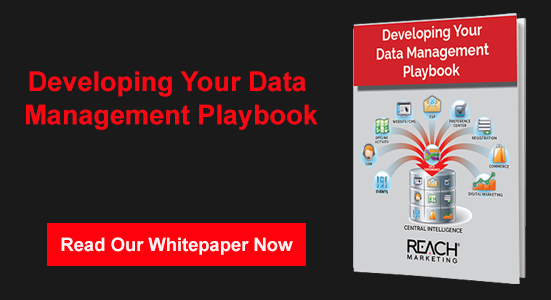For B2B businesses, account-based marketing is the new standard. Instead of taking a piecemeal approach, businesses focus on individual high-value customers with a personalized, targeted marketing effort.
ABM is a resource-intensive strategy that’s possible only with modern technology; without a sufficiently powerful database, marketing on this individual level wouldn’t be scalable. Not every company is prepared to take the step up to ABM, though. Without the data infrastructure, it’s impossible to refine your approach to the granular level needed for true account-based marketing.
Here’s how to get your database up to speed and prepare to implement your ABM strategy.
Identify Top Leads
Your first step in preparing for account-based marketing is gaining insight into which accounts are difference-makers for your organization. Who are your most valuable customers, and what do they have in common? Data about customers and leads should drive your decisions about your target accounts. There’s little room for guesswork when seeking the most promising sources of new leads. Look at customer records first and cross-reference them with prospect data to see where your most valuable market segments truly are, not where you think they might be.
Think on an Individual Level
While grouping similar prospects together is a necessary first step toward ABM, it doesn’t stop there. The value of market segmentation is well known, but account-based marketing lets you take it a step farther so you’re effectively connecting with a segment of one. Individuals on the same company account can have different goals, and with ABM, you’re able to reach all of these decision-makers with information that will help them make important choices.
For example, a CIO might want spec sheets and in-depth information on features, while the organization’s CFO is more concerned with costs and benefits. Both are principal actors in the decision-making process, but they’re using different criteria to assess whether your product fills their needs. Data-driven ABM lets you speak to both of them.
Maintain Data Quality
The degree of prospect knowledge you need to make this strategy a success is an order of magnitude greater than standard marketing data collection. Clean, verified, timely data is a must. If you’re talking to multiple leads within the same account, you have to know each of them well. Verify information regularly and carry out data hygiene processes frequently to ensure that you’re working with the most accurate information. Data enrichment can also help you gather all the data you need on prospects.
Create Targeted Content
When you have complete and timely data, you’re ready to put it to work by generating content that meets your decision-makers’ needs. Let’s go back to the example of the CIO and CFO who have the same ultimate goal but different criteria for evaluating it. The content that would convince an IT director would address specifics about functionality, so your nurture stream for this lead might include white papers and product demos. The organization’s CFO, on the other hand, prioritizes value and responds more to articles describing ROI and statistics about earning potential. Prospect-specific content puts you where each of these important leads wants you to be.
Account-based marketing pays significant dividends, but it takes some preparation. Make sure your marketing software is up to the task with database services that prepare the field for a rich crop of high-value prospects.
© Reach Marketing LLC 2017 All Rights Reserved.







